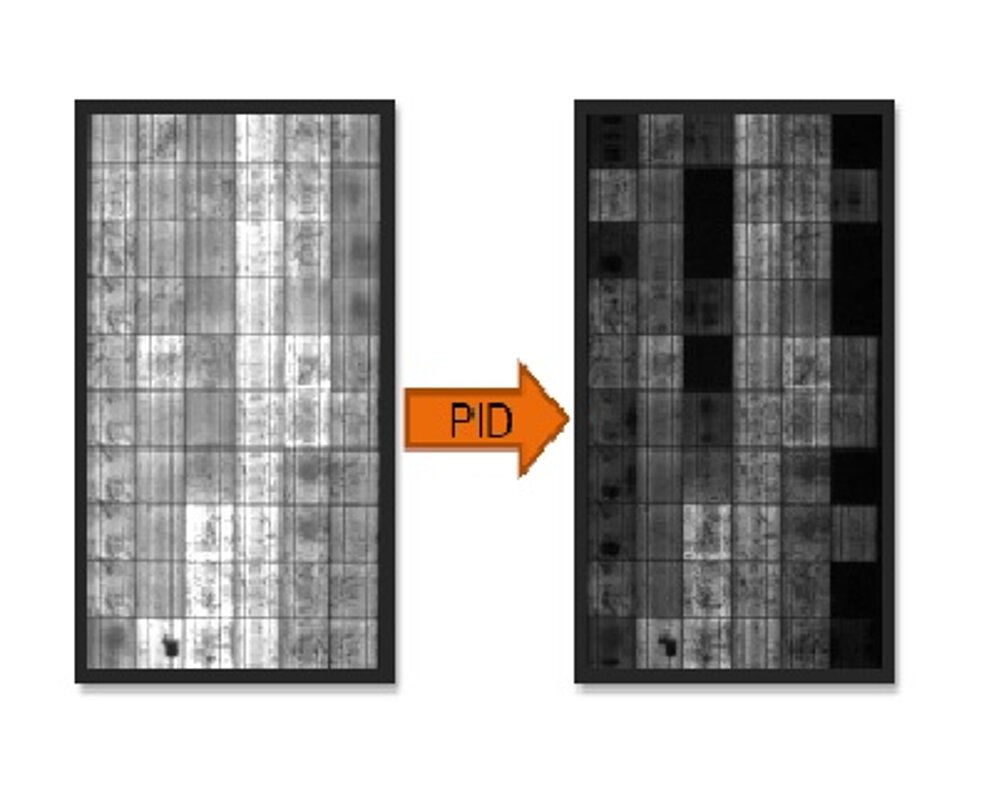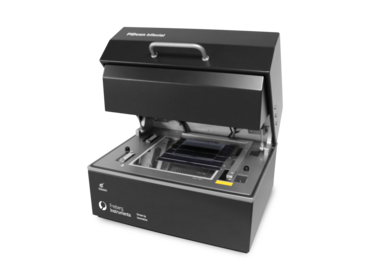

Furthermore an easy pass or fail criterion after finishing the PID measurement is suggested. It is assumed that an efficiency loss of 3% at the end of the PID test lead to a fail of the solar cell (according to IEC-Standard). The measurement time therefore is 168 h at room temperature or 72 h at 85 °C (recipe “Long”). An efficiency loss of 3% is equal to an increase of the cell’s conductance of 150 mS for the tested area, meaning 1.5mS/cm2 related to the 100 cm2 electrode size. The formula for calculating the conductance is as follows:
So it is the reciprocal of the parallel resistance related to the degraded area. If the PID diagram of a cell after 72 h shows a higher conductance increase as 1.5 mS/cm2, it fails the test and has a PID problem and should be sorted out, otherwise it will pass it. Please keep in mind that the test is not for absolute value of conductance, but only for increase of conductance (Conductance at the start point is unequal to zero).
Please notice that the curves “Power loss” and “Conductance” look equal in the auto focus option, since the formulas are comparable.
To save measurement time, the recommended measurement time is shortened to 4 hours. The fail criterion for that time span is 0.1 mS/cm2 at 1000 V and 85 °C. Keep in mind that this criterion is only a hint for a PID problem, a conductance increase of 0.1 mS/cm2 in 4 h will not lead to a measurable power loss. Therefore it is in the customer’s responsibility to check and use this fail criterion. Same applies for the recipe “Fast” with a fail criterion of 0.025 mS/cm2 after 1 h. Nevertheless usage of higher measurement times (minimum 4 hours) is strongly recommended.

